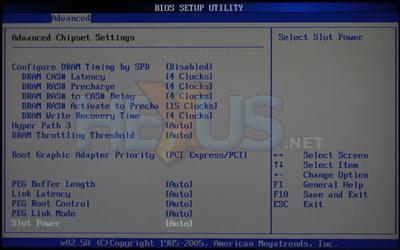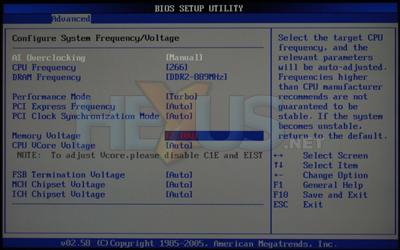Software and BIOS configuration
Like all big system integrators, MESH is challenged to be all things to all men, and we noted a few areas where, for our purposes, and even arguably for a great many other people, we would have configured a few things a little differently; however bearing in mind that it was an eleventh-hour pre-production build and MESH are fully aware of the issues, we'd expect them to correct them all. If not, there's always MESH.care@HEXUS support forum to ask them how to personalise things just the way you'd like.First of all, despite the disks and disk controller supporting AHCI, MESH chose to configure them in standard IDE mode. Changing to AHCI in the BIOS gave a blue screen of death on boot, showing that MESH hadn't installed the right driver for that ICH7R disk controller operating mode. Also concerning the disks, the unit would often take a significant amount of time to detect the disks, despite a very high IDE timeout setting, and would even crash sometimes at the end of the disk controller probe as the system looked for them. We know from first-hand experience that the 2nd generation Maxtor Diamondmax 10 disks work with ICH7R in AHCI mode, mostly because the system I'm using to author this article uses just that combination, and it's something MESH are looking into with ASUS.
We also identified a memory compatibility issue where the system was unstable at the SPD settings the OCZ modules supplied. Timings had to be relaxed as a result to achieve stability. However, in MESH's defence, the modules are not guaranteed to run at their quoted timings on this particular motherboard. You'd need a fully EPP-supporting motherboard for that.
The OCZ memory is designed to run at 900MHz at 4-4-3-15 timings and up to 2.1V±5%, but the ASUS mainboard isn't approved to run it at those settings as you can see. We're still happy to see PC6400+ memory being used. The extra bandwidth should help performance a touch, and we'll find out just how effective DDR2-889MHz memory is in our benchmarks.
Further, the wireless was configured in software AP mode (default setting) out of the box, which we class as a misconfiguration as most will use it in adapter mode, and there was no installed software to run the infra-red remote, so that didn't work. Otherwise we got the bog-standard XP Home with SP2 install that any vendor is able to provide. Onwards to the performance analysis.











